
Why Hindus blow conch and significance of conch in Hinduism and ayurveda
Conch is known as shankh in Sanskrit and its derived languages like Hindi and Malayalam. Shankh in Sanskrit means “Conch holding sacred water”. Shankha is pronounced sanka, chanku, senkham, sankha and shankho in Gujarati, Tamil, Telugu, Oriya and Bengali respectively. Shankha is actually the outer covering of a giant sea snail biologically called as “Turbinella pyrum” and found abundantly in the Indian Ocean. Conch Shell, made of calcium and magnesium, is very hard, strong and shiny. Shankh is of utmost importance in Hinduism as it signifies brilliance, luster, auspiciousness and purity. This is why conch is the emblem or logo of many institutions and organizations.
Shankh-A sacred symbol
Shankha is the royal emblem of Travancore and election symbol of political outfit “Biju Janata dal”. Even the shape of our country resembles conch.

Shankha is predominantly found in the walls, statue, and basements of temples. Sacred city of Puri well known for Rath yatra is known as “Shankha Kshetra”, meaning “Place of Conches”, referring to the abundance of conch shells found in the adjacent ocean. Due to its close resemblance with vulva and oceanic water, conch is also regarded as the symbol of fertility. In Greek culture, Conch shells adorned with pearls were offered to express the feelings of sex, love and marriage.
How blowing conch creates conscious morphogenetic fields?
Some scientific experiments have revealed the formation of vibratory patterns in conches found only in Indian Ocean. This conch is of species Turbinella pyrum of family ‘Turbinellidae’.
Conch is blown through the lower tapering hole. Air blown then traverses the spiral outer covering to produce the sound that results in the formation or morphogenetic fields. Vedas says “Foundation of all creation is the morphogenetic consciousness field (Brahman) created by ‘OM’ sound waves”.
Blowing a conch perfectly would result in the formation of scalar waves that would enter your body to create conscious morphogenetic fields. Spiritual effect of the sound waves is not heard by ears but felt by heart. This spiritual effect of echoing sound waves stimulates the electrons within each of trillions internal cells to stimulate the hormonal glands and spiraling chakras.
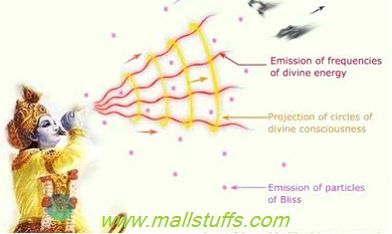
Person blowing the conch purifies his inner soul by annihilating the negative Raja-Tama frequencies inside the body. Thus, maximum benefits are obtained from the frequencies generated by the morphogenetic fields of conch sound waves.
If blown strongly with tremendous power, brought from lungs and sustained breath plus stamina, powerful sound waves emanating from conch can reach each corners of a small village. This means any simple human being is capable of creating a morphogenetic field whose waves goes beyond several kilometers and matches with the primordial sound of the universe.
Blowing Conch produces AUM sound
Conch resonate the AUM sound. This is why it is placed on all temples and blew in all religious ceremonies be it marriage, sacrifice, house warming etc. When Lord Krishna blew his conch before the start of Mahabharata war, the whole world trembled in fear as they listened to the thundering sound emanating from the conch.
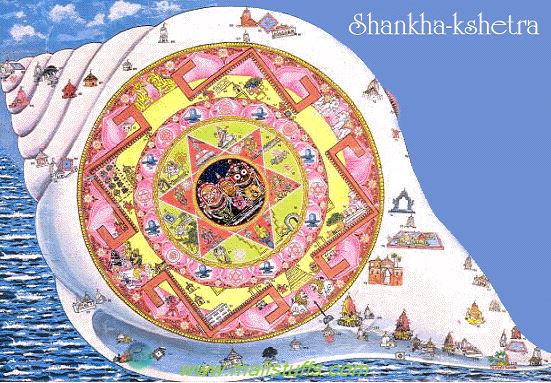
Morphogenetic consciousness field of lord Krishna conch
Sound from the conch blew by lord Krishna just before the start of Mahabharata war striked terror among the kaurava warriors. The mesmerizing sound waves were heard all around the world. Sound produced because of the conch unique design created the morphogenetic consciousness field. With his blowing of conch, Lord Krishna announced the victory of good over evil. According to vaishnavism, conch when blown, produces the primeval sound that creates this universe with five elements: water, fire, air, earth and ether.
How to blow a conch?
Shankh signifies the natural vibration of earth which gets magnified on entering the curved layering on conch shells.
To blow a conch, your back must be erect else the resulting sound would not produce the desire effect inside your body due to non formation of morphogenetic fields. Raise your neck up and bend it slightly backward.
Take a deep breath, fill your lungs with air and divert all your concentration towards blowing of the conch. This is very necessary as the shankh is blown in a single breath.
Close your eyes and bring in the positive devotional attitude by removing all negative thoughts from the mind. Now blow the conch from low pitch to high pitch in a single breath as long as possible. Longer the blowing time, more is the lasting period of the resulting sound waves.
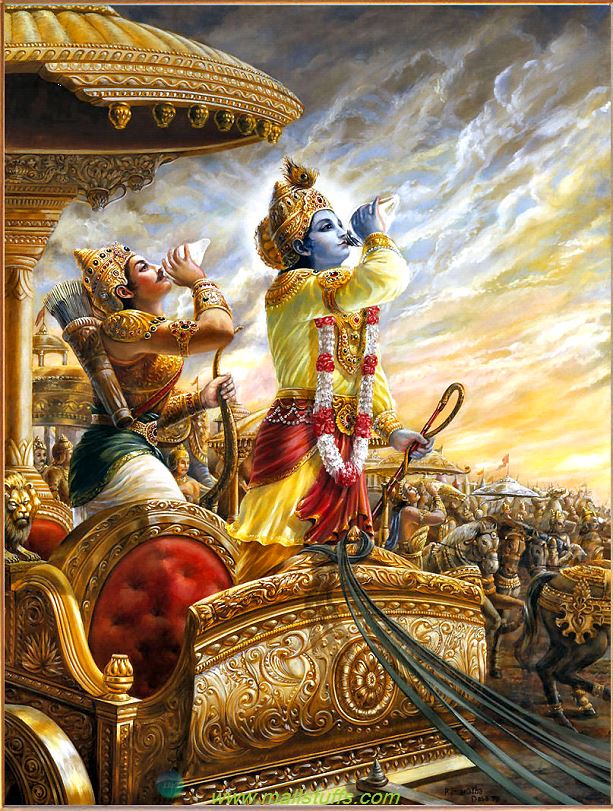
Blowing conch also improves the voice quality and so is blown by singers, politicians and stage show artists to improve their orating skills.
<>
Shankh Ki Goonj-Shankh Ki Katha-Mahima
Musical Notes of shankh
Unlike other musical instruments, shankha can produce only one note but the player can skillfully produce multiple notes by changing the pitch, magnitude and resonance. Shankha is not the instrument for entertainment but the instrument to imbibe spiritual efficacy, enthusiasm and devotion. Sonorous blissful effect of the conch sound waves is mentioned even in the sikh religious book Gurbani as “Sankhan ki dhun ghantan ki kar phulan ki barkha barkhavae ", meaning “The conch and the bell produce blissful sounds”


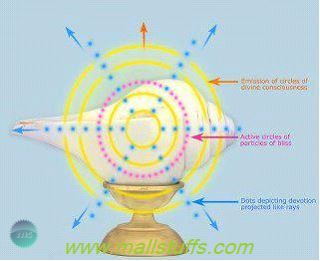
Conch is also used as a musical instrument in Indian classical dance.
<>
Group of Hindu priests blowing Turbinella pyrum conch
How shankh is used in religious ceremonies?
Shankha has been in use in Indian culture since time unknown.
Beginning of any ritual is marked by 3 times blowing of conch to reduce the negative energies in the environment. Use of conch is written in every Hindu religious book like Vedas, puranas and bhagavad gita. Shankh is blown in every Hindu religious ceremony be it bhoomi pujan, marriage, house warming ceremony, thread wearing ceremony etc. Water is poured from shankh to bath the deity and the objects that are used in ceremonial rituals before the start and end of the festival or sacrifice. Water poured from conch is as sacred as water of the river ganga.
Conch shell must be placed on a soft cloth or silver or clay plate. Conch is usually filled with water or gangajal which is later sprinkled in religious ceremonies. Filling conch shell with milk and sprinkling it during Lakhsmi puja is a very common ritual observed in various parts of the country.
The Shanka verse recited in pooja is:
"Shankham chandrakadaivatwam kukshouvaruna daivatam
prusthe prajapatirdaiva mugre ganga saraswati
Pruthivyam yani teerthani vasudevasyachagyaya
Shankhe tisthanti viprendra tasmat shankham prapoojyayet"
According to Tantric belief, the shankha keeps away evil spirits and saves one from calamities. Following is the verse that is chanted to do so
"Shankha Madyesthitam Thoyam Brahma Hatyadhikam Daheth
Anga Lagnam Manushyanam Mruthyu Samsara Bheshajam"
Why Conch is blown in religious ceremonies?
Conch shell is blown multiple times in religious ceremonies to remove negative energies and produce positive morphogenetic fields. This helps in purification of the house and removal of all obstacles. Positive morphogenetic field is used to invoke the god or is said to attract the attention of the god.
On hearing the sound of conch, one should stop his/her work for few seconds and heed attention to the soothing sound waves till the conch is blown. This helps in the peacefulness and awakening of the mind. Also, people should offer prayers to their revered deity by taking out some time out of their daily household chores.
Commercial use of conch
When hundreds of conch is blown together in a particular pattern, energy produced from the resulting vibrations heals the ozone layer and reduce environmental pollution.

Conch is also blown to mark natural calamities or crisis like situation.
EX: fire alarm buzzed in industries and companies.
Conch made bangles or bracelets of various sizes, shapes and designs are largely worn in Bengali marriages. Dhaka in neighboring Bangladesh was known as the hub of conch shell industry. Factories in Dhaka produced blowable conch decorated with complex figures of Hindu deities crafted beautifully by skilled artisans.
Conch shaped button was also widely used in shirts before it was commercially replaced by cheap plastic button.
Shankh is used in the cure of diseases
Cosmic vibratory Sound of shankh is still used in the cure of many diseases. One can hear the gentle ocean waves on holding a perfect shaped conch near the ear. This actually signifies the vibration of cosmic energy inside the conch that gets magnified when the air is blown from inside.
Shankha bhasma- Ayurvedic medicine
Ash produced by burning conches is used as an ayurvedic remedy to cure several diseases. This ash called as ‘Shankha bhasma’ is produced by burning the conch shell after soaking it in lime juice for few hours. Since the ash has high amount of minerals like iron, calcium, and magnesium, it effectively cures digestive and antacid diseases. Shankha bhasma when mixed in correct proportion with tamarind, ammonium chloride, asafetida, aconite, mercury, pepper, ginger and some other ayurvedic herbs is use in the cure of dyspepsia. This medicine is called as Shankavati in ayurveda.
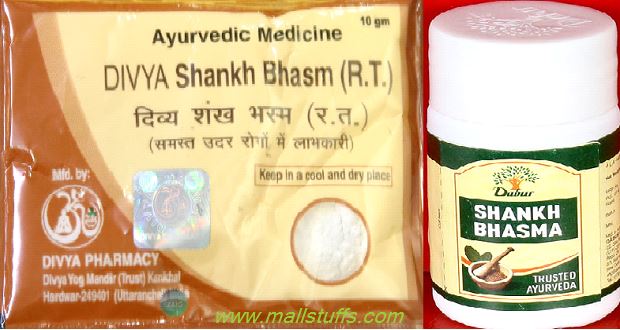
Shankh represents dharma (righteousness)-one of the four goals of human life. Water stored in conch is given as Prasadam to the devotees. Conch is worshipped as
Twam puraa saagarot pannaha
Vishnunaa vidhrutahakare
Devaischa poojitha sarvaihi
Panchjanya namostu te
Translation:
Salutations to Panchajanya
the conch born of the ocean
Held in the hand of Lord Vishnu
and worshipped by all devaas
Healing properties of conch
1) Conch is effectively used in the cure of cholera and plague like diseases.
2) Water stored in conch has high concentration of sulphur and calcium. Person who struggles to speak or has speech disorder must drink conch water regularly.
3) Skin diseases are cured by missing conch water in bucket of water used for bathing.
4) Mix conch water (kept for 8+ hours) with rose water for shining black hair.
5) Conch water kept for 12+ hours can cure stomach pain and intestinal problems. Make sure your stomach is empty before you drink conch water.
6) Rub conch surface on face to remove wrinkles, black patches and dark circles. This would additionally instill a glowing face.
7) Cow milk stored in conch is used for the purification of the house.
8) Conch vibrations act a sterilizer that destroys harmful viruses and bacteria’s in the environment. Effect of conch was proved by Nobel Prize winner Indian scientist ‘Jagdish Chandra Bose’.
9) Blowing conch regularly frees you from respiratory diseases.

10) Playing shankh is equal to doing yogic exercises that saves us from deadly diseases like BP, heart attack etc.Tuberculosis, Asthma, Influenza, Liver, Spleen diseases will be eradicated echoing conch.
11) Conch vibrations can cure deafness. Cochlea is the inner part of the ear that is shaped like a conch. Sound waves heard by ear bangs the eardrum which then transmit the waves to cochlea. These sound waves are passed onto the brain by cochlea. When conch is blown, generated pressure waves travels though the tube in the shape of the conch to reach cochlea. Conch shaped waves helps in reducing the deafness in the humans.
12) Inner structure of conch is spiral and curved. And as we know, DNA is also spirally shaped. Conch waves helps in repairing damaged DNA.
13) Sound waves of shankh destroy the negative energies from the atmosphere. So, conch is blown in houses to remove the influence of negative energies and evil spirits.
14) Keep GANGAjal in Dakshinavarti SHANKHA for the whole night and offer it to heart and diabetic patients the next morning. This helps in faster cure of diseases.
15) According to VASTU SHASTRA, Keeping a skahnkh in puja room removes all the Vaastu dosh of your house.
Conclusion:
Shankh pacifies the inauspicious and impure. So, don’t miss blowing the conch shell on every religious event. Blow conch shell for good health and prosperity. Blow conch shell for removal of obstacles and evil influences. May blowing conch fills your life with extreme bliss and happiness. Conch is the most auspicious object of this universe and so, do keep it close to your heart.
Note: Images used on this website
are either a production of Bhaktivedanta Book Trust(https://www.krishna.com), Iskcon
Foundation or were found in google search under "Free to use and share". If any
of the images presented here violates copyright issues or infringes anyone copyright
or are not under "Fair use", then please bring it to our notice. Read
Disclaimer for more.
Share this to your friends. One of your friend is
waiting for your share.
Related Articles
How to chant AUM and mantras
Do plants feel pain or sufferings
Science in Hinduism-Theory of perception
Science in hinduism-Embryology in Garbhopanishad and Charaka samhita
How to deal with rising menace of self-styled god-mens and gurus
What Happens To Us After Death
Effects of chanting AUM or mantras
Prabhupada rebuts Darwin theory of evolution and genetic mutation
Why Lord krishna had more than 16000 wives
How darwin was wrong on Natural selection and genetic mutations
Post Comment